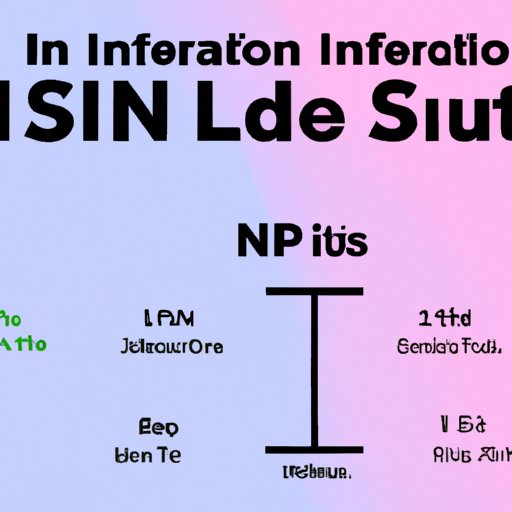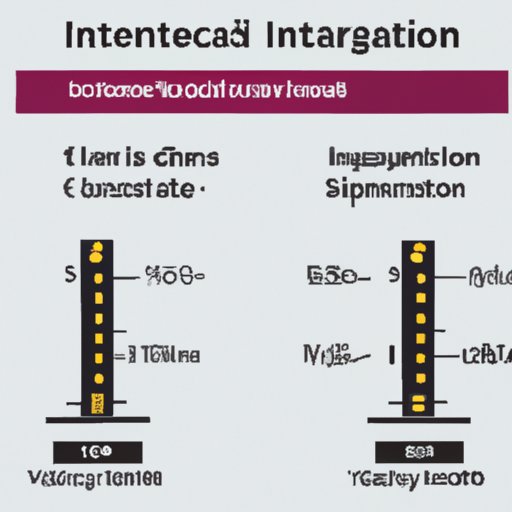Introduction
The scientific community relies heavily on SI units (International System of Units) to make accurate measurements and conduct research. But what are SI units in science, and why are they so important? In this article, we’ll explore the basics of SI units in science, from their definition to their application in the scientific community. We’ll also discuss the significance of SI units for making precise measurements.
Exploring the Basics of SI Units in Science
To understand SI units in science, it helps to first define the SI system. The International System of Units is an internationally agreed upon set of units that are used to measure physical phenomena, such as length, mass, and time. The SI system consists of seven base units, which are then used to construct derived units. For example, the unit of speed is derived from the base units of length and time.
In addition to the base units, there are also SI prefixes, which are used to indicate different orders of magnitude. For instance, the prefix “kilo” indicates one thousand, while the prefix “milli” indicates one thousandth. These prefixes can be applied to any of the base units to create more specific units of measurement.
Finally, it’s important to understand unit conversion. Unit conversion is the process of converting one unit of measurement into another. This is often done when dealing with different units of measurement, such as converting inches to centimeters. Unit conversion is essential for accurate measurements in science.

A Comprehensive Guide to Understanding SI Units in Science
Now that you have a basic understanding of SI units in science, let’s take a closer look at how they work. To start, let’s review the seven base units of the SI system.
SI Base Units
The seven base units of the SI system are the meter (m), kilogram (kg), second (s), ampere (A), kelvin (K), mole (mol), and candela (cd). Each of these units is used to measure a specific type of physical phenomenon. For instance, the meter is used to measure length, the kilogram is used to measure mass, and the second is used to measure time.
Derived Units
Derived units are created by combining two or more of the base units. For instance, the unit of speed is derived from the base units of length and time, as it measures how far something travels over a given amount of time. Other examples of derived units include the newton (N), which is derived from the base units of mass and acceleration, and the joule (J), which is derived from the base units of energy and work.
Examples of SI Units in Science
Now that you know how SI units are constructed, let’s look at some examples of their use in science. SI units are used in all branches of science, from physics to chemistry to biology. Some common examples of SI units in science include the watt (W), which is used to measure power, the hertz (Hz), which is used to measure frequency, and the pascal (Pa), which is used to measure pressure.
Introduction to SI Units: What Are They and How Do They Work?
To truly understand SI units in science, it helps to look at how they are constructed and applied. Let’s start by looking at how SI units are constructed.
Understanding How SI Units Are Constructed
As mentioned earlier, the SI system consists of seven base units, which are then used to construct derived units. For instance, the unit of speed is derived from the base units of length and time. By combining the base units in different ways, scientists can create more specific units of measurement.
Differentiating Between Derived and Base Units
It’s important to understand the difference between derived and base units. As the name implies, base units are the foundation of the SI system. They are used to construct derived units, which are more specific units of measurement. For instance, the unit of speed is derived from the base units of length and time.
Using SI Units to Make Measurements
Once you understand how SI units are constructed, you can begin to apply them to make measurements. For instance, if you want to measure the speed of an object, you would use the derived unit of speed, which is derived from the base units of length and time. By combining these two base units, you can accurately measure the speed of an object.

The Significance of SI Units in Scientific Measurement
Now that you have a better understanding of SI units in science, let’s explore the significance of using them for making precise measurements. Here are a few key points to consider.
Why SI Units are Necessary for Accurate Measurements
SI units are necessary for accurate measurements because they provide a consistent way to measure physical phenomena. Without SI units, scientists would have to rely on different systems of measurement, which could lead to inconsistencies and inaccuracies. By standardizing units, scientists can ensure that their measurements are accurate and reliable.
Understanding the Benefits of Standardizing Units
Standardizing units also has other benefits. By having a consistent system of measurement, scientists can compare data from different sources more easily. This makes it easier to draw meaningful conclusions from research studies. In addition, using standardized units makes it easier for scientists to communicate with each other, as everyone is speaking the same “language” when it comes to measurements.

Making Sense of SI Units in Science
Now that you understand the significance of SI units in scientific measurement, let’s take a look at how they are used in different contexts. Here are a few key points to consider.
Comparing Metric and Imperial Systems
The SI system is based on the metric system, which is used in most parts of the world. However, some countries, such as the United States and the United Kingdom, still use the imperial system of measurement. Although both systems use the same base units, there are some differences in terms of prefixes and derived units. For instance, the unit of force in the metric system is the newton, whereas in the imperial system it is the pound-force.
Understanding How SI Units are Used Across Disciplines
SI units are used across all scientific disciplines, from physics to chemistry to biology. However, the specific units used may vary depending on the discipline. For instance, in physics, the SI system is often used to measure concepts such as energy and momentum, whereas in chemistry, the SI system is often used to measure elements such as mass and volume.
Applying SI Units in the Scientific Community
Now that you have a better understanding of SI units in science, let’s look at how they are used in the scientific community. Here are a few key points to consider.
Learning How to Convert Between Units
When working with SI units, it’s important to know how to convert between different units of measurement. For instance, if you want to convert meters to kilometers, you need to know how to use the SI prefixes to make the conversion. Converting between units is essential for making accurate measurements in science.
Understanding the Role of SI Units in Data Analysis
In addition to making accurate measurements, SI units are also essential for data analysis. By using standardized units, scientists can more easily compare data from different sources. This makes it easier to draw meaningful conclusions from research studies and to share data with colleagues.
Conclusion
SI units are an essential part of the scientific community. They provide a consistent way to measure physical phenomena, which is essential for making accurate measurements and conducting meaningful research. By understanding how SI units are constructed and how they are used in the scientific community, scientists can ensure that their measurements are precise and reliable.
(Note: Is this article not meeting your expectations? Do you have knowledge or insights to share? Unlock new opportunities and expand your reach by joining our authors team. Click Registration to join us and share your expertise with our readers.)
